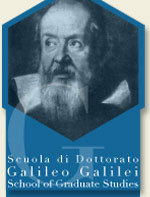 |
|
"Galileo Galilei" Colloquium(June 12th 2006)
"Coupling of Dinuclear Redox Centers in Various Structural Contexts"
Professor Frank Albert Cotton, Texas A&M University, Department of Chemistry, College Station, Texas, USA Aula Magna del Dipartimento di Matematica, UniversitÓ degli Studi di Pisa, Largo Pontecorvo (ex-Marzotto), Pisa, ore 16:00.
Abstract:
Many compounds are now known in which transition metal atoms are united by bonds of order greater than one, including those of order four. Quadruple bonds are based on d orbitals and they are expected only among the transition elements. The presence of multiple bonding has been established conclusively. A great variety of molecules have been synthesized, containing two pairs of quadruply bonded molybdenum(II) ions ("dimolybdenum") with different linkers. Several molecular properties depend on the strength of the electronic coupling of the two dimolybdenum units, and the coupling can be tuned by varying the linkers. These molecules have then been studied by many physical techniques (electrochemistry, EPR, magnetic susceptibility, electronic spectroscopy and X-ray crystallography) to evaluate the magnitude of the coupling. |